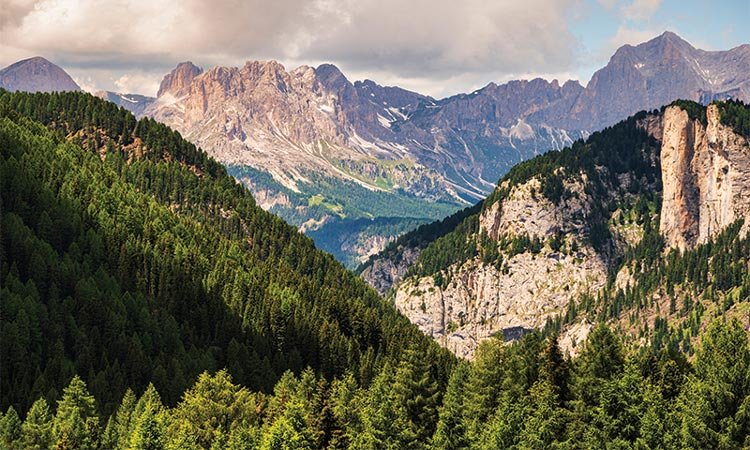It’s sometimes called the most human of instruments, because it has the noble mission of expressing our deepest emotions. It sings in its deep vibrant voice to touch our soul. In the most moving part of a film, a violin or cello often plays to emphasize the emotion portrayed on screen. As the famous violinist Joshua Bell said, “When you play a violin piece, you’re a storyteller.”
What makes this such a special instrument? Much study has been done over the last 300 years since the golden days of violin-making by the likes of Stradivari. Violins have been x-rayed, analyzed, and measured in a hundred different ways, yet the mystery lingers. Some things defy measurement.
High in the Italian Alps is a forest called the Musical Woods (Il Bosco Che Suona). This is where some of the greatest violins are born. The trees endure a rugged climate. Lorenzo Pellegrini is a forest ranger—or forest gardener, as he prefers to call himself—who passionately explains how violin trees should grow. He said: “Slowly, slowly, slowly! Up in these mountains, they grow so slowly that sometimes they stop growing altogether. They just gather strength. There are trees up here that are a thousand years old. Can you believe that? And there should not be too much water. The tree’s heart should stay dry. That gives the best wood. Solid. Enormous resonance!”
We should remember this when we are going through our own dry seasons. The Master Luthier may be preparing us to become an instrument that will beautifully resonate and can move a listener to tears of joy.
In biblical times, there was a dry, arid region on the road to Jerusalem, filled with a type of “weeping tree” (dripping resin). As people traveled, they would pass through this weary, “weeping” place, but the difficult journey was worth it in the end.
What joy for those whose strength comes from the Lord, who have set their minds on a pilgrimage to Jerusalem. When they walk through the Valley of Weeping, it will become a place of refreshing springs. The autumn rains will clothe it with blessings. They will continue to grow stronger, and each of them will appear before God in Jerusalem.1
In the same way, those who experience sorrow in this life—and who doesn’t?—can find strength in their faith in God. The journey of a faithful Christian through times of hardship can be a step-by-step expedition through “a place of refreshing springs.”
Back to the Musical Woods. The perfect tree is selected for its tonal quality by specialists like Marcello Mazzucchi, a retired forest ranger who calls himself “a tree listener,” and who says, “I observe them, I touch them. Sometimes, I even hug them. Look carefully and they’ll tell you their life story, their traumas, their joys, everything. Such humble creatures.” When he finds one that seems perfect, he points it out: “Look, it shoots up perfectly straight. It’s very cylindrical. No branches at the bottom. If you ask me, there’s a violin trapped inside.”
Mazzucchi takes out a borer, which is a manual drill, and twists it like a corkscrew through the bark. He listens carefully to the knocking sound the borer makes each time it hits a new tree ring. He pulls out a core sample, and after examining it carefully declares, “Magnifico!”
Jesus said that we have not chosen Him, but rather, He has chosen us.2 But unlike the perfect violin tree, Jesus doesn’t pick people because they are good or perfect. If we look back on Bible heroes like Noah and Abraham, or the twelve apostles, we find that, just like us, they were full of flaws. But God saw the potential in each one of them, something magnifico that they may not even have realized themselves.
Before cutting, Mazzucchi makes sure that there are tiny spruce saplings growing nearby for the next generation of violins. Removing an adult tree will let more sun in and help the saplings mature. “As soon as a tree falls, those younger trees who were suffering in the shadows can start to grow more quickly,” he says. And some of those will themselves become musical instruments to be played decades, or even centuries, from now. The tree dies, but lives on in its new form.
At just the right time, when all the conditions are optimal, the tree is cut into slabs and is put out to dry. The drying or seasoning time for a piece of violin wood is generally ten years or more, depending on its size and thickness. Fifty-year-old wood is even better.
The next time you hear the mesmerizing refrain of a violin, remember all that went into it. In like manner, perhaps you are a work in progress, and what you are going through now is just preparation for that magical moment when the curtain opens and the Master lays His bow upon your strings for you to sing your story.
